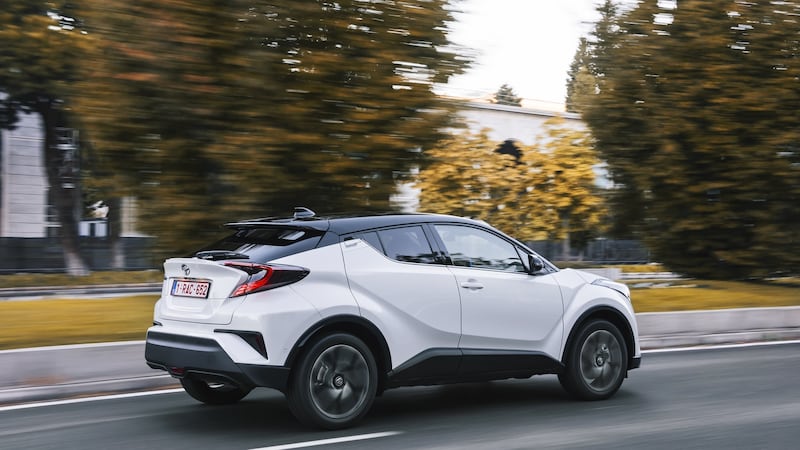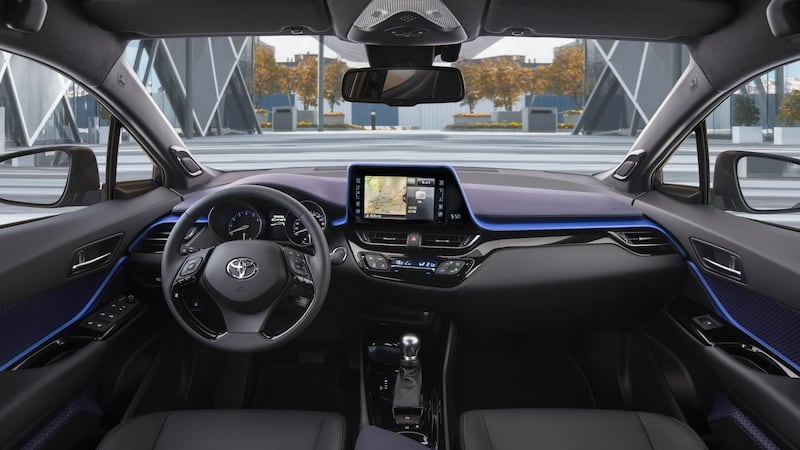The new Toyota C-HR epitomises a new genre of motoring design – the crossover. It's a motoring mongrel and in this case results from breeding a hatchback, a coupe and an SUV. Like all interbred iterations the offspring can be a love-hate affair. And like their canine counterparts, crossovers can suffer some side effects from mixing the motoring genes.
The first thing to address about this Toyota is the styling. The hatchback-SUV mix is a tried and trusted recipe but throwing in the sloping rear of a coupe has proved a flop more often than not. For proof, consider the BMW X6 or Mercedes GLE. The whole point of these cars is added practicality: swiping off a big swathe of the rear seems insane.
Yet the styling on the C-HR works for me. It’s meant to appeal to the image-conscious motorist, a new market for Toyota given its history of bland family cars.


The attention on styling and image continues on the inside, which is a bit of a marvel for Toyota. After years of criticising their over-plastic, grey interiors and misdirected attempts to embrace new tech, the C-HR is positively premium. In fact in terms of fit and finish this is worthy of the upmarket Lexus marque, not the mass market Toyota brand.
Divisive
Styling is smart if divisive and the interior is top class. So what of the rest of the car? Toyota executives are at pains to point out the C-HR is on a par with the likes of the Nissan Qashqai when it comes to space, but there is no escaping the fact that the sloping rear roofline makes it feel a little tight getting into and out of the back. It looks more like a Nissan Juke rival when you stand next to it in the metal.
You can study the stats, but the senses suggest the rear seats in this car are more cramped than its more regular crossover rivals. It’s not helped by the smaller rear windows that sweep up early and leave the rear passenger cloaked behind a large rear c-pillar. Round the back and the heavily designed tailgate is also unusually heavy and requires a good effort to open, although there’s an impressively spacious boot back there.
Under the bonnet the C-HR offers a choice of hybrid or petrol. The no diesel option seems like yet another example of hybrid fundamentalism on the part of the Japanese brand. However, as this is aimed at suburban empty-nesters and young couples, perhaps it was very prescient. The backlash against diesels in urban areas is gaining momentum and hybrid is increasingly fashionable among the C-HR’s target market.
Having spent time with both the 1.2-litre petrol and this 120bhp 1.8-litre petrol-electric hybrid unit and CVT transmission – taken from the Prius – I’d always opt for the small petrol with manual transmission. It’s smoother, quicker and more responsive.
Eco-credibility
The hybrid clearly delivers in terms of eco-credibility, but whereas in the Prius, the Toyota engineers have managed to smoothly deliver power from the electric motor and engine, on this car any sort of acceleration sends the engine revs soaring. Our long-standing complaints about the CVT transmissions were abated in the new Prius but they’ve returned with the hybrid C-HR.
The good news is that fuel economy savings can be significant for urban drivers. The “electric mode” on offer really only came into action at crawling speeds but in general the support of the battery meant we were achieving at least 5.6 l/100km (50mpg) in heavy urban traffic where fuel economy normally suffers. Still, for us the best engine for this car remains plucky 1.2-litre petrol engine. It’s got enough punch for this car and for the sort of low-mileage buyer this car is targeted at, an efficient petrol engine is a perfectly acceptable choice.
It also boasts a price advantage, starting at €26,895 compared to €29,350 for the hybrid. Step up to the impressive Luna Sport trim and it’s €29,950 in the petrol and €31,950 for the hybrid version.
Interior
Match the petrol engine with the impressively high-quality interior of the C-HR and you get a glimpse of how Toyota is stepping up its game. The mainstream car market has become a nihilistic Mad Max landscape, with relative newcomers such as Hyundai and Kia undercutting more established players. Meanwhile margins have been cut to the bone, all at a time when the mainstay models such as family saloons are no longer the favoured format for buyers. For firms like Toyota, it's time to shift a little upmarket and catch up with car buyers' fondness for crossovers.
In that light this crossover is a real head-turner and the divisive looks are to be welcomed, if only because I’d back a “love it or loathe it” design strategy over bland and insipid styling any day. In the 1.2-litre petrol format, it’s a premium player at a mainstream competitive price. Toyota has been late to the crossover party, but judging by the C-HR it has been worth the wait.
Our rating: 4/5
Verdict: Impressive crossover showcasing a new benchmark for Toyota interiors – petrol version is the best to drive
Engine: 1.8-litre 4-cylinder petrol/electric hybrid
Power/torque: 120bhp/142Nm
Transmission: CVT automatic, front-wheel drive
0-100 km/h: 11.0 seconds
Official fuel economy: CO2: 3.8 l/100km (72.4mpg)/87g/km
Prices: starting €26,895 (€31,950 as tested)











